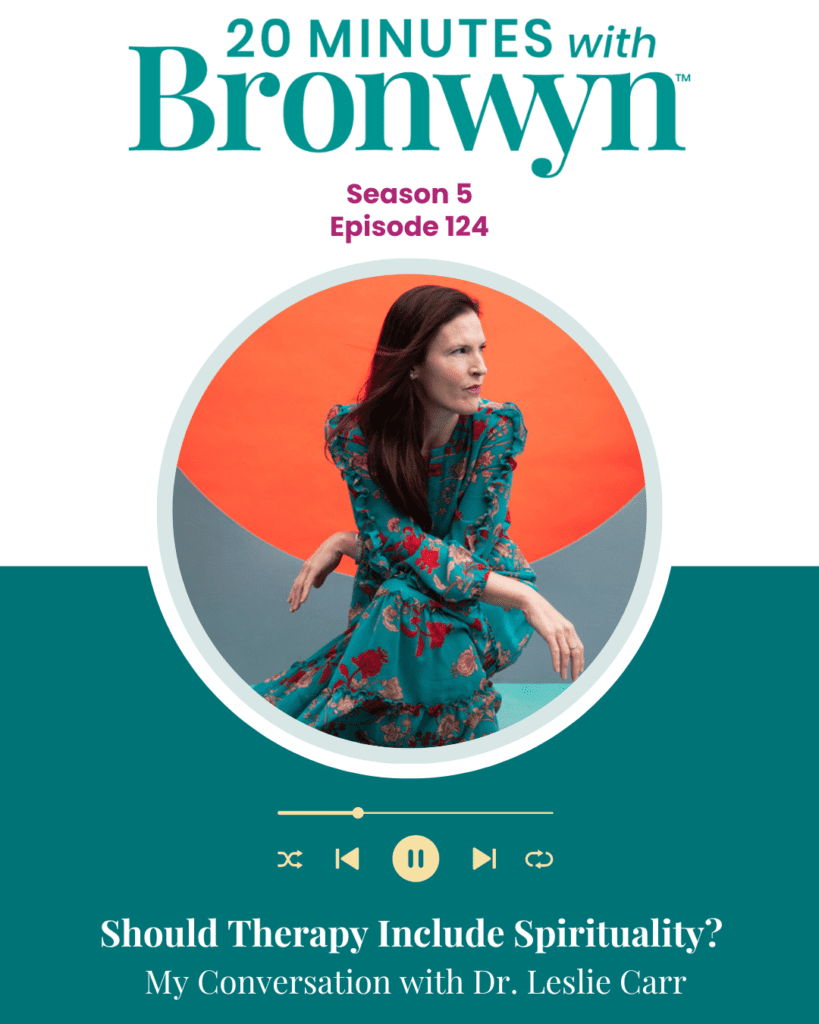As far as I can tell, I only have two real talents in this lifetime: teaching and singing.
And oddly, the bigger the audience, the better.
Don’t ask me to do basic math, handle any kind of detailed logistics, or point out the state of Ohio on an unmarked map of the United States.
But give me something to teach or sing, and I will get on stage and rock that mic.
There’s just this one problem: I am gut-twistingly terrified of being on stage—teaching or singing.
When I say “gut-twistingly terrified,” it is not an exaggeration. I literally feel like I’m going to throw up every time I grab the mic, which in my line of work (and play) is weekly.
Our Talents Live On the Other Side of Fear
I tell you these things not to puff myself up, but rather to share what I’ve learned:
I believe that exploring and developing our talents in this lifetime may be the point of this lifetime.
I also believe that exploring and developing our talents requires a willingness to cross over the threshold of fear—not once in a while, but consistently. Every time.
I wish this weren’t the case, but I’m pretty convinced it is.
If you think about it, we grow up in environments that actively teach us to shy away from what frightens us. And for good reason. Most of us wouldn’t have reached the age of 18 had it not been for a good, steady and consistent drumbeat of fear.
The problem is that we are not actively taught how to determine the difference between terror generated by life-threatening situations and the terror generated by life-changing situations. Life-threatening situations require that we listen to the inner voice shouting danger!!
Life-changing situations (and I mean that in the best possible sense) require that we graciously thank that inner voice, but move towards the thing that would have us soiling ourselves.
So how do we stay vigilant and clear minded as we evaluate situations for real danger (vs. perceived danger)? How do we teach ourselves to move through the fear and towards that life-changing opportunity? And not just once in a while, but every time?
In the immortal words of Montell Jordan, this is how we do it:
Step One—Life-Threatening or Life-Changing?
I’ve found that life-threatening fear warnings have a certain feel to them… for me, it’s like the volume on my outer world gets turned way down, and I can almost hear my own voice warning me to stay away from something. It’s like time stops, and I become very, very alert, listening with every cell in my body. I know this feeling well, and when I get it, I don’t ignore it.
Life-changing fear warnings have a completely different feel to them—for me at least, they are physiologically 100 times more uncomfortable and unpleasant. It starts with the heart pounding hard in my chest, and continues until my breath is ragged, my lower abdomen turns to liquid, and my mouth goes completely dry.
When I work with people, I ask them to notice what these two very different instinctual reactions feel like. Once you become familiar with the territory of each warning system, it’s much easier to figure out how best to respond.
And the good news is that while life-changing fear warnings can be incredibly alarming and uncomfortable, they can also be managed and overcome. If you have the tools.
Step Two—Arrest the Cycle
The physiological chain reaction that is kicked off by a life-changing fear warning can be pretty horrendous. It’s an ugly process that can feel like certain death. It’s no wonder so many of us opt out of big opportunities to shine in public. The feeling of life-changing fear is almost overwhelming.
But you can stop the cycle before it builds too much momentum.
Hands down, the most powerful technique to arrest this cycle is… breathe.
I know, I know… sounds too simple. But as God is my witness, it is absolutely necessary.
Because… stay with me for a second… Let’s say you feel the cycle building—the heart is starting to pound or rattle inside your chest. At this moment, sh*t is going down in your brain. That heart-pounding sensation is sending a message to your noggin’ that you are literally under attack. And once the amygdala—the part of your brain that records memory, decision-making, and emotional reactions—sends a 911 message that an attack is under way, it triggers the HPA (hypothalamic-pituitary-adrenal) axis. This HPA axis response overrides our rational brain, aka the neocortex. In fact, the verb “overrides” is kind of an understatement, so therapists call it “amygdala hijacking.” What gets lost in this hijacking is our access to the neocortex… you know, that glorious place where creativity, problem-solving, and empathy live? If left unchecked, this process causes your ability to manage, function, and behave like a rational human to go out the window.
Conversely, if the amygdala senses all is well, that you are safe, it allows your rational brain—the neocortex—to keep running things.
And how do you let the amygdala know that all is well?
BREATHE. BREATHE. BREATHE.
Deep belly breaths, to be specific. Try inhaling three counts, exhaling three counts. Then, inhale four counts, exhale four counts. If you’re really ambitious, see if you can stretch it to five full counts on the inhale, and five on the exhale.
This is, without a doubt, the most important thing you can do to greet fear and move past it. Bar none. This is how you stop the cycle.
If you’re really twitchy, and your body needs to release the adrenaline that’s coursing through your body, try shaking out your hands forcefully, or jumping up and down. Seriously. The body needs what it needs. Don’t judge. Might you look silly for a few moments? Maybe. But then you will be well positioned to…
Step Three—Recommit, Stand & Deliver
The last stage of the process involves a recommitment. You can choose the type of recommitment… see which of these appeals to you the most:
Recommit to dancing with fear. I’m a big fan of using mantras or phrases that I can easily repeat that give me courage or focus or strength. For the first 5 or so years of giving talks professionally, I would repeat these words:
Feel the fear and do it anyway. (Thank you Susan Jeffers)
But you might like something more along the lines of:
Everything I want is on the other side of fear. (Thank you, George Addair)
Recommit to the audience you are attempting to serve. This is my go-to activity after my breath is under control. There is a tremendous amount of comfort and strength available to you if you realize that a) it’s never about you, it’s always about serving the audience, and b) the audience always wants you to win. Always.
Recommit to the why of your decision to dance with fear. Recommit to the fact that you didn’t incarnate into this body to “eat sandwiches and then have a tombstone,” as Guru Singh likes to say.
You came here to live. You came here to experience the incredible diversity of highs and lows, and joy and sorrow and pain and, most of all, you came here to experience your own talents.
Once you’ve moved through Step Three, and found the recommitment that works for you, you are ready to slay.
Nursing Home Realness
My grandfather spent his last few days in a nursing home, waiting for esophageal cancer to finally take him. One afternoon, my mother was pushing him in his wheelchair, taking him out for some fresh air. In that raspy voice only esophageal cancer can produce, he said to her, “All my life, I’ve been so afraid. And for what? Look at me. Look at this place.”
Listening to my mother describe this conversation, my grandfather’s words rang like an alarm inside of my 22-year-old brain. I decided that day to learn the ways of fear, and to attempt to live as joyful a life as I could possibly muster, not in spite of fear, but in partnership with it (even at 22 I knew it was impossible to spite fear). I am profoundly grateful that I had the opportunity to hear my grandfather’s words, even if only secondhand.
So, my friend. In case you haven’t had the pleasure of a jolting deathbed conversation, please borrow mine.
Don’t see fear as something to avoid.
Fear is the hallmark of a life well-lived.
Fear is the sensei who will teach you to kick ass, and move to the next level.
The next time you feel your heart begin to pound, and your palms begin to sweat, smile: you’re about to kick ass.
Hugs and high fives,
B
Current Obsessions—Summer Reading Edition
Circe, by Madeline Miller
When I picked this novel out of a lineup, I was skeptical. It’s the story of a lesser goddess who is at the mercy of the whims of the other, more powerful (and narcissistic) gods around her. Meh, I thought. But it had gotten such great reviews, I sucked it up and bought it. And thank God (or goddess?) I did. It is gorgeous. It is transporting. It is delicious. Also, I now fantasize about having an island all to myself, just like Circe.
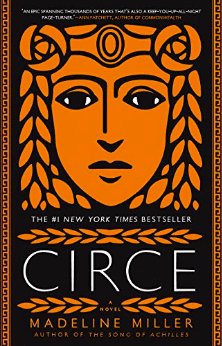
When I picked this novel out of a lineup, I was skeptical. It’s the story of a lesser goddess who is at the mercy of the whims of the other, more powerful (and narcissistic) gods around her. Meh, I thought. But it had gotten such great reviews, I sucked it up and bought it. And thank God (or goddess?) I did. It is gorgeous. It is transporting. It is delicious. Also, I now fantasize about having an island all to myself, just like Circe.
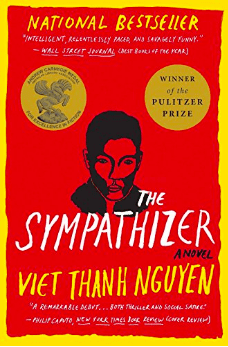
The Sympathizer, by Viet Thanh Nguyen
I’m not typically interested in war fiction—especially not war fiction focused on Vietnam. I grew up watching Platoon, Born on the Fourth of July, Apocalypse Now, and was morbidly fascinated by Conrad’s Heart of Darkness. But every movie I had seen—or story I had read—about Vietnam left me feeling sick to my stomach. All this to say, I wasn’t interested in reading about Vietnam. Not even a little bit. But a Pulitzer is a Pulitzer, and in 2016 Viet Thanh Nguyen won for his debut novel. His debut effing novel won a Pulitzer. It didn’t disappoint. It begins when the Americans leave Vietnam, and it’s written from the perspective of a young Vietnamese captain, who is actually a secret agent for the Communist North. The Sympathizer is one of the most powerful novels I have ever read, and I actually wrote a dorky, tear-soaked fan email to the author—which I have only ever done one other time in my life… when I emailed Anthony Marra after finishing his incredible novel Constellation of Vital Phenomena—and he actually wrote me back!! The Sympathizer took me far out of my comfort zone, and far into the Vietnamese experience of the “American War” as they called it. The writing is absolutely beautiful, and the story is one I will never forget.
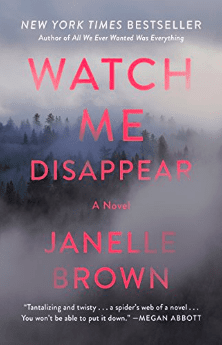
Watch Me Disappear, by Jonelle Brown
I was up until the wee hours reading this book, and when I finally fell asleep, I dreamt about these complicated yet familiar characters. Yes, it’s in the same vein of those other “girl” thrillers (Girl in Seat 24b, Gone Girl, Girl on the Train, etc), but the twists and turns of this novel are so totally inventive and unexpected that Watch Me Disappear is in a class by itself. And I found the ending profoundly satisfying. Email me once you finish so we can discuss, mmmkay?
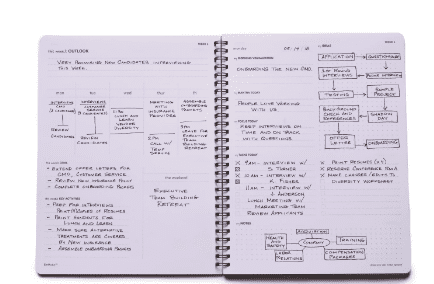
Zermodus Planner
I am a planner nerd and have made my way through several different types of planners over the years: The Filofax in the 90s, the Franklin Planner in the early 2000s, and I spent the past few years using the Desire Map Planner. I have now officially switched to the Zermodus Planner. It has all of the focus and meditative aspects that I’ve come to love in the Desire Map Planner, but it’s focus is tighter: the Zermodus is a 12-week planner. This is important because a) it’s a helluva lot lighter to lug around and b) a 12-week horizon forces you to actually execute on the sh*t you say you’re going to do. None of this annual goal-setting nonsense. Decide what mountains you must move over the next 12 weeks, and get movin’. The design is sparse, sleek and muted. I’m smitten.
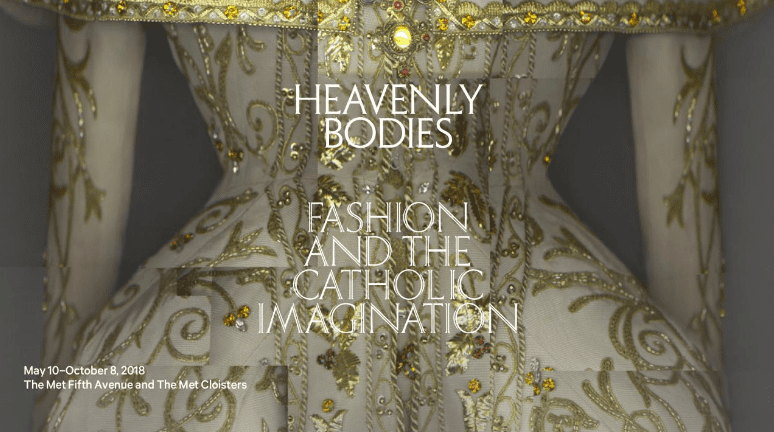
Heavenly Bodies: Fashion & the Catholic Imagination— The Met, NYC
I knew it would be fabulous… how could it not be? But I was completely unprepared for the experience of this exhibit. I found myself in a state of awe… and if I’m being honest—a little bit emotional wandering the rooms. Just like Catholicism itself, the exhibit is an exercise in contradictions… and in contrast. The sumptuous bejeweled crosses, gilded chalices, and vestments worn by various Popes were breathtaking, but also infuriating. As a Catholic, I am drawn to the social justice of my church, not the pomp… I wonder how many mouths could have been fed with just a single ruby or diamond from any one of the items in the gallery? At the same time, the artistry and devotion to beauty is undeniably divine. Wandering the “fashion” segment of the exhibit, you notice the inventiveness of designers like Alexander McQueen and Thierry Mugler, as they allowed their “Catholic imagination” to inspire garments fit for goddesses (if not Saints). That these (and so many other gay artists) can be so profoundly influenced by a faith that essentially rejects them is heart-breaking and infuriating and moving and—ultimately—uplifting. If you find yourself anywhere near New York City, get ready to genuflect to some serious genius.

